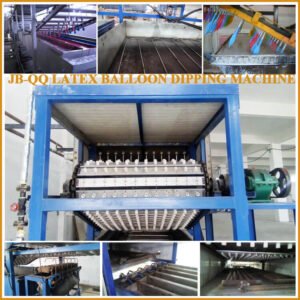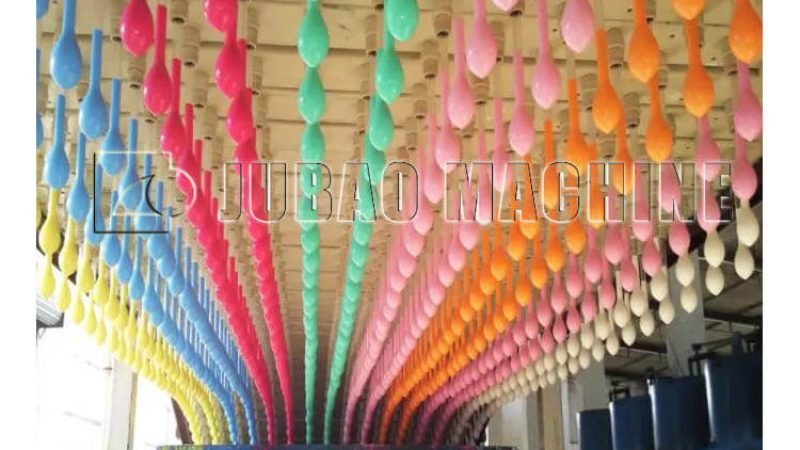How to Make a Balloon in a Factory: A Complete Manufacturing Guide
Table of Contents
- Introduction
- Types of Balloons Manufactured
- Raw Materials and Components
- Manufacturing Equipment and Setup
- Step-by-Step Manufacturing Process
- Quality Control and Testing
- Safety Considerations in Balloon Manufacturing
- Environmental Impact and Sustainability
- Conclusion
Introduction
The balloon manufacturing industry combines traditional craftsmanship with modern industrial processes to create products that bring joy to millions worldwide. From birthday parties to grand openings, balloons serve as universal symbols of celebration. Understanding how balloons are manufactured in factory settings reveals a fascinating blend of chemistry, engineering, and precision manufacturing that transforms simple raw materials into colorful, flexible products.
Modern balloon factories operate as highly efficient production facilities where automated systems work alongside skilled technicians to produce thousands of balloons daily. The manufacturing process varies significantly depending on the type of balloon being produced, with latex and foil balloons representing the two primary categories in commercial production.
Types of Balloons Manufactured
Latex Balloons
Latex balloons represent the most common type of balloon produced in manufacturing facilities. These balloons are created from natural rubber latex, which provides excellent elasticity and biodegradability. Latex balloons come in various sizes, from small water balloons to large parade floats, and can be manufactured in virtually any color or pattern.
Foil Balloons
Foil balloons, also known as mylar balloons, are constructed from thin metallic polyester film. These balloons offer superior gas retention properties compared to latex, making them ideal for helium-filled applications. Foil balloons can be shaped into complex designs and often feature printed graphics or text.
Specialty Balloons
Modern factories also produce specialty balloons including biodegradable options, extra-long modeling balloons, and custom-shaped balloons for specific events or promotional purposes.
Raw Materials and Components
Latex Production Materials
The primary raw material for latex balloon manufacturing is natural rubber latex, typically sourced from rubber trees. This liquid latex is combined with various additives including:
- Sulfur for vulcanization
- Zinc oxide as an activator
- Accelerators to speed the vulcanization process
- Antioxidants to prevent degradation
- Colorants and pigments for aesthetic appeal
Foil Balloon Materials
Foil balloon production requires specialized materials including:
- Polyethylene terephthalate (PET) film
- Metallic coating for reflective properties
- Heat-sealable coatings
- Printing inks for graphics and text
- Valve materials for inflation ports
Manufacturing Equipment and Setup
Modern balloon factories utilize sophisticated equipment designed for high-volume production while maintaining consistent quality standards. The centerpiece of most operations is the balloon making machine, which automates critical steps in the manufacturing process and ensures uniform product specifications.
Essential Manufacturing Equipment
Dipping Lines: Automated conveyor systems that move balloon forms through various chemical baths and drying stations. These systems can process hundreds of balloon forms simultaneously, ensuring efficient production cycles.
Vulcanizing Ovens: Temperature-controlled chambers where latex undergoes chemical cross-linking to achieve desired elasticity and strength properties.
Testing Equipment: Automated systems for quality control including burst pressure testing, gas retention measurement, and visual inspection stations.
Packaging Machinery: High-speed equipment for sorting, counting, and packaging finished balloons according to customer specifications.
Step-by-Step Manufacturing Process
Latex Balloon Production
Step 1: Mold Preparation
The manufacturing process begins with aluminum balloon molds, which are cleaned and heated to approximately 200°F (93°C). The molds are then dipped in a coagulant solution, typically calcium chloride, which helps the latex adhere properly to the mold surface.
Step 2: Latex Dipping
The prepared molds are dipped into tanks containing liquid latex compound. The thickness of the balloon wall is controlled by the dipping speed and the viscosity of the latex mixture. Multiple dips may be required for thicker balloons or specific strength requirements.
Step 3: Drying Process
After dipping, the latex-coated molds pass through drying ovens where hot air circulation removes moisture and begins the initial curing process. This stage typically takes 15-20 minutes at temperatures around 200-250°F (93-121°C).
Step 4: Vulcanization
The dried latex undergoes vulcanization, a chemical process that creates cross-links between polymer chains. This process gives the balloon its characteristic elasticity and strength. Vulcanization occurs in specialized ovens at controlled temperatures for predetermined time periods.
Step 5: Stripping and Inspection
Once cooled, the formed balloons are mechanically stripped from the molds. Each balloon undergoes visual inspection for defects such as thin spots, holes, or irregular shapes. Quality control technicians remove any substandard products from the production line.

Foil Balloon Manufacturing
Step 1: Film Preparation
Polyester film sheets are prepared by cleaning and applying heat-sealable coatings. The film may also receive printed graphics during this stage, using specialized printing equipment designed for metallic surfaces.
Step 2: Die Cutting
The prepared film is cut into balloon shapes using precision dies. Computer-controlled cutting systems ensure accurate dimensions and minimize material waste.
Step 3: Heat Sealing
Cut film pieces are positioned in heat-sealing equipment where precisely controlled temperature and pressure create strong, airtight seams. This process requires careful attention to sealing temperature and dwell time to prevent film damage while ensuring proper adhesion.
Step 4: Valve Installation
Inflation valves are installed using automated equipment that positions and secures the valve assembly to the balloon. The valve area receives additional sealing to prevent gas leakage.
Step 5: Final Testing
Completed foil balloons undergo pressure testing to verify seal integrity and gas retention properties. Balloons that fail testing are removed from production batches.
Quality Control and Testing
Physical Property Testing
Balloon manufacturers implement comprehensive testing protocols to ensure product safety and performance. Key tests include:
Burst Pressure Testing: Balloons are inflated to failure to determine maximum pressure tolerance. This data helps establish safe inflation guidelines for consumers.
Gas Retention Testing: Helium-filled balloons are monitored over time to measure gas permeability rates. This testing is particularly important for foil balloons used in long-duration applications.
Elasticity Testing: Latex balloons undergo stretch testing to verify proper vulcanization and material consistency.
Chemical Safety Testing
All balloon materials undergo chemical analysis to ensure compliance with safety regulations, particularly for products intended for children’s use. Testing includes analysis for heavy metals, phthalates, and other potentially harmful substances.
Statistical Process Control
Modern balloon factories employ statistical process control methods to monitor production consistency. Regular sampling and measurement of key parameters help identify potential issues before they affect large production batches.
Safety Considerations in Balloon Manufacturing
Worker Safety
Balloon manufacturing involves various chemical processes and high-temperature operations that require comprehensive safety protocols. Workers receive training in proper handling of latex compounds, solvent vapors, and hot surfaces. Personal protective equipment including respirators, gloves, and protective clothing is mandatory in designated areas.
Chemical Handling
Safe storage and handling of chemicals used in balloon production requires specialized ventilation systems, spill containment measures, and emergency response procedures. Regular monitoring of air quality ensures worker exposure remains within acceptable limits.
Fire Prevention
The presence of flammable solvents and heated processes necessitates robust fire prevention and suppression systems throughout manufacturing facilities.

Environmental Impact and Sustainability
Waste Reduction Strategies
Modern balloon manufacturers implement various strategies to minimize environmental impact:
Material Recovery: Latex trimmings and rejected balloons are collected and recycled back into the production process where possible.
Energy Efficiency: Advanced heating and drying systems incorporate heat recovery technology to reduce energy consumption.
Water Treatment: Facilities implement water treatment systems to process wastewater from cleaning operations before discharge.
Biodegradable Options
Growing environmental awareness has driven development of more sustainable balloon options. Natural latex balloons biodegrade relatively quickly compared to synthetic alternatives, and manufacturers are developing new formulations that accelerate this process while maintaining performance characteristics.
Sustainable Sourcing
Responsible manufacturers source natural latex from suppliers committed to sustainable forestry practices and fair labor standards.
Conclusion
Balloon manufacturing represents a sophisticated industrial process that transforms simple raw materials into products that create joy and celebration worldwide. The combination of traditional materials like natural latex with modern manufacturing technology enables efficient production of high-quality balloons that meet stringent safety and performance standards.
As the industry continues to evolve, manufacturers face increasing pressure to balance production efficiency with environmental responsibility. Innovations in materials science, manufacturing processes, and quality control systems will continue to shape the future of balloon production, ensuring that these simple yet beloved products remain available for generations of celebrations to come.
The success of any balloon manufacturing operation depends on careful attention to every aspect of the production process, from raw material selection through final packaging. By maintaining high standards for quality control, safety, and environmental stewardship, balloon manufacturers can continue to serve the global market while contributing positively to their communities and the environment.
